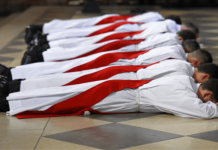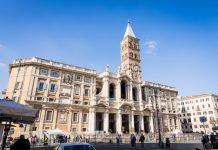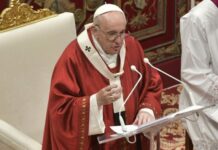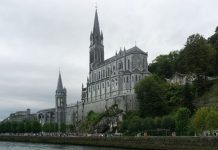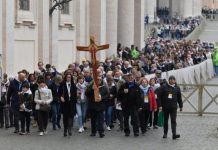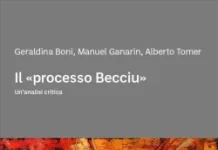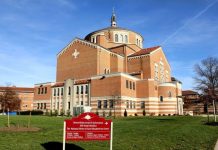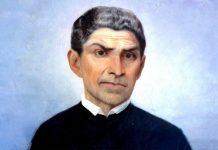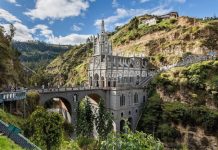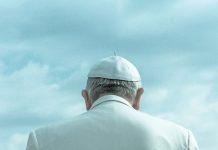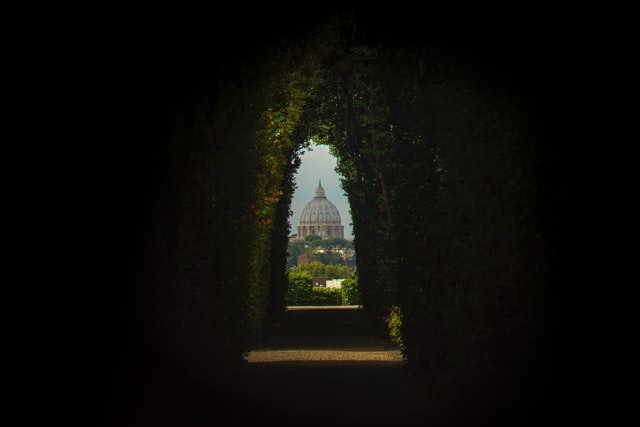As the Vatican’s financial trial revolving around a London property deal and allegations of corruption continues, the question of what Pope Francis himself knew has been raised in court by a defendant.
Newsroom (16/07/2022 6:45PM Gaudium Press) Interrogated on Thursday, July 7, Fabrizio Tirabassi, a former official of the Secretariat of State, said the Pope had authorized the Secretariat to ask for a loan from the Institute of Works of Religion, commonly referred to as the Vatican Bank.
The money was meant to pay off the mortgage and take over the management of the Sloane Avenue property in London’s affluent Knightsbridge district.
Following his interrogation on Thursday, the Vatican prosecutor on Friday questioned Nicola Squillace, the lawyer of another businessman, Gianluigi Torzi.
Squillace and Torzi are also defendants in the trial, and both have been charged with embezzlement, fraud, misappropriation, money laundering, and self-money laundering. Torzi has also been accused of extortion.
On Friday, in the trial’s 24th and latest hearing, the court heard from the broker’s lawyer about crucial details of the contract that transferred the management of the London luxury building from Torzi’s own company, the Luxembourg-based Gutt SA.
This contract –a memorandum of understanding –– plays an essential role in the trial: It helps to shed light on a crucial chapter in the saga of how the Vatican ended up with an investment in London involving a Luxembourg-based company. A saga that had begun, of all places, with the oil-rich African nation of Angola.
Context from Angola to Gutt
In 2013, the Secretariat of State decided to invest 200 million euros (about $202 million). It explored the possibility of buying shares in an oil extraction company in Angola by the name of Falcon Oil. At the suggestion of Credit Suisse, which managed the Secretariat of State’s fund, the Vatican department entrusted the deal to the Italian broker Raffaele Mincione.
In 2014, he was considered an expert in this kind of deal. Today, he is another defendant on trial in the Vatican – and has vigorously protested any claim of wrong-doing.
To carry out the Angola operation, Mincione set up his fund, Athena Capital, to which the Vatican transferred the sum of 200 million euros. However, the Angola deal fell through, and through Mincione’s Athena fund, the Vatican agreed to have half of the money used to purchase shares in a luxury property project in London. The other half was intended for other investments.
Four years later, in 2018, the Secretariat of State decided they no longer wanted to have the London investment managed by Mincione. The Vatican re-purchased the real estate shares, which were handed over to the broker Gianluigi Torzi’s company Gutt SA.
Notably, Torzi kept a thousand shares for himself –– the only ones with voting rights.
Only after this final turn of events did the Secretariat of State decide to take direct control of the luxury property development: The Vatican moved to purchase Torzi’s shares – and this is the context of the interrogations of both Tirabassi and Squillace in the latest trial hearing.
What happened in court
In court, Tirabassi claimed that the Secretariat of State, and he, in particular, did not realize at first that the shares given to Torzi were the only ones with the right to vote, effectively giving Torzi control over the building.
Torzi’s lawyer said otherwise.
Squillace presented slides of seven draft contracts to the court, saying he worked on these to facilitate moving the investment from Athena to Gutt. He also claimed to have raised the question of the shares with Tirabassi, who had allegedly replied that everything was okay because the Secretariat of State had other, similar operations.
Tirabassi’s questioning in court also dealt with another crucial matter: The mortgage from London asset manager Cheyne Capital on the luxury property.
When the Secretariat of State decided to take control of the building in an apparent bid to save the investment, it also faced the mortgage sum, which ran to about $147 million. To service this payment, the Secretariat of State turned to the Vatican’s own “bank,” the Institute for the Works of Religion (IOR), for a loan.
The Sostituto, Archbishop Edgar Pena Parra, was the obvious move, according to Tirabassi in court: “there was nothing more transparent than contacting one’s internal institute.”
All the more surprising, then, was that this move was unsuccessful.
In court, Tirabassi said that the IOR’s director-general, Gianfranco Mammì, had personally spoken to Pope Francis about the matter. He also said the Pope had approved the loan to the Secretariat of State.
Other documentation shows that Cardinal Pietro Parolin, the Vatican Secretary of State, had clearly said in meetings that he had had the Pope’s approval for the loan. (Cardinal Parolin is not a defendant in the trial.)
According to Tirabassi’s version of events, a letter on May 24, 2019, from the president of the IOR, Jean Baptiste de Franssu, approved the loan and gave the green light to the money going to the Secretariat of State.
But only three days later, the green light turned to red: Tirabassi said the Vatican’s watchdog, the Financial Information Authority (ASIF), had blocked the loan, authorizing instead a revised plan of the Secretariat of State to acquire the building.
The watchdog and the papal decision
ASIF exchanged information with foreign counterparts when it received a suspicious transaction report from the Secretariat of State.
Given its role is to supervise the IOR, it was clear that ASIF would continue to monitor the flow of money.
One might even think that the procedure authorized by the Pope, also given the investigations that followed, effectively hindered the watchdog’s work. This question will probably be explored in the course of the hearings, and if so, in the context of the different points of view offered at the most recent hearings at the trial by Tirabassi on the one hand and Squillace on the other: Tirabassi claimed to have been duped by Squillace and Torzi, and Squillace has always claimed to have given continuous information.
Tirabassi raised a further point about the decision-making processes in the Vatican, the question of Monsignor Alberto Perlasca, then head of the administration of the Secretariat of State, signing agreements he was not authorized to sign off on.
Tirabassi spoke of the monsignor’s desire to take charge of problems to avoid involving superiors. He also said that he distanced himself from Perlasca once he realized that Perlasca’s behaviour was potentially harmful.
On the other hand, Squillace stressed that he always thought that Perlasca could sign, especially the first agreement. This so-called framework agreement contained no obligations, only reciprocal commitments, with exclusivity upon expiry. “The Holy See could withdraw from that agreement at any time,” he said.
At the hearing, Tirabassi said Perlasca “was very determined to give the management to Torzi.”
The interrogations will continue on 14 and 15 July. Then the trial resumes in September, with three consecutive hearings scheduled every two weeks –– and possibly with the first witnesses.
(Via CNA)
Compiled by Raju Hasmukh



